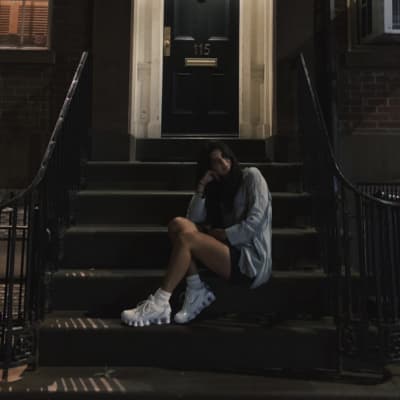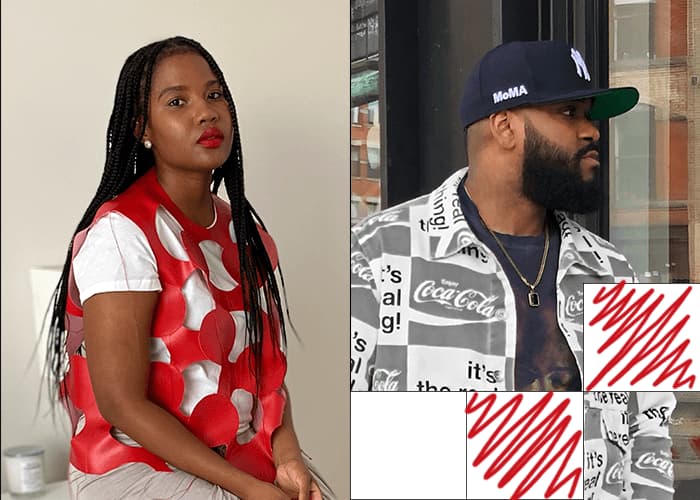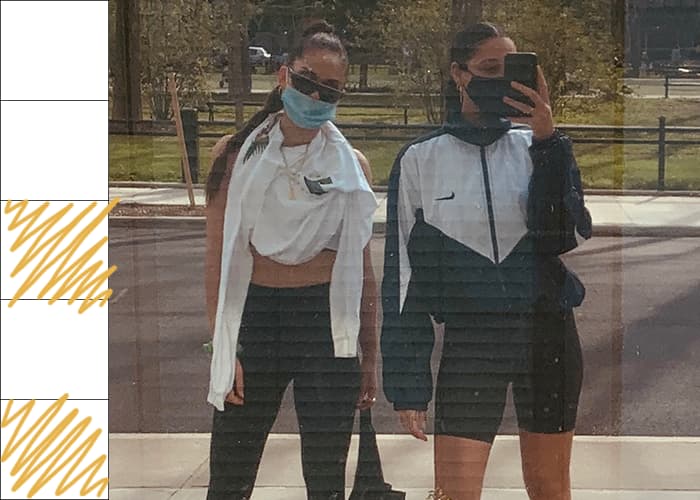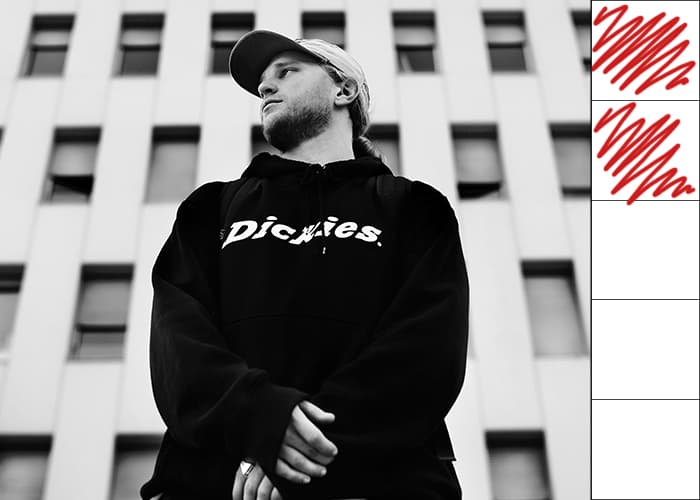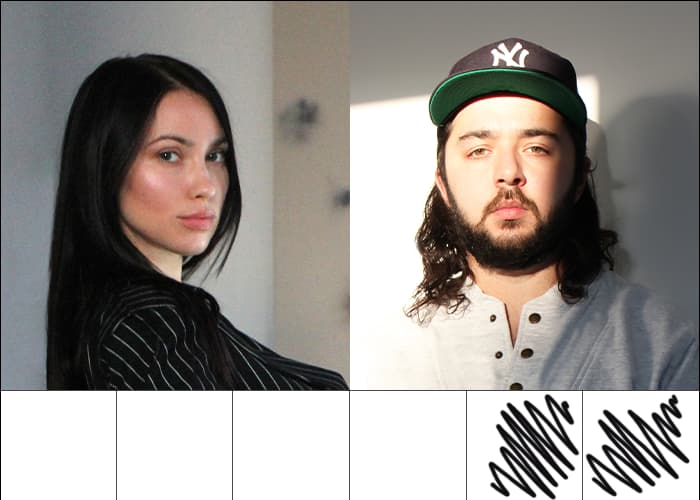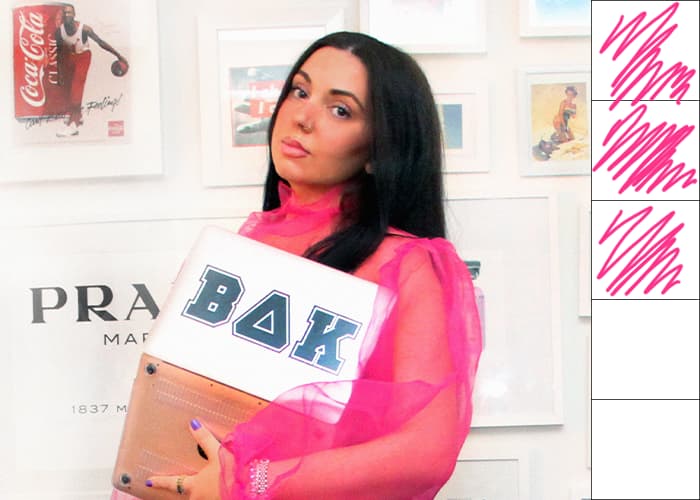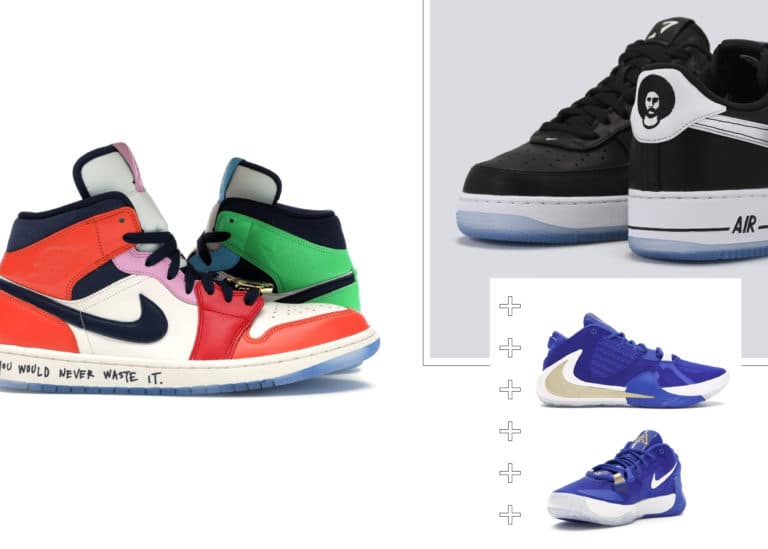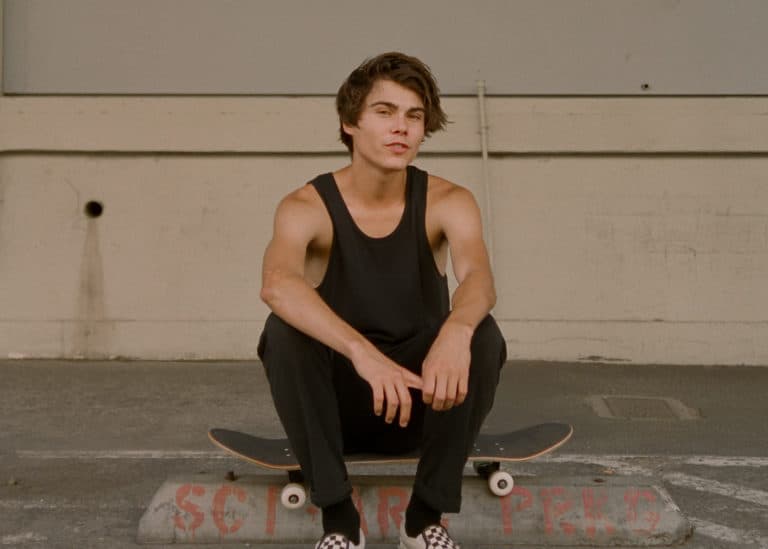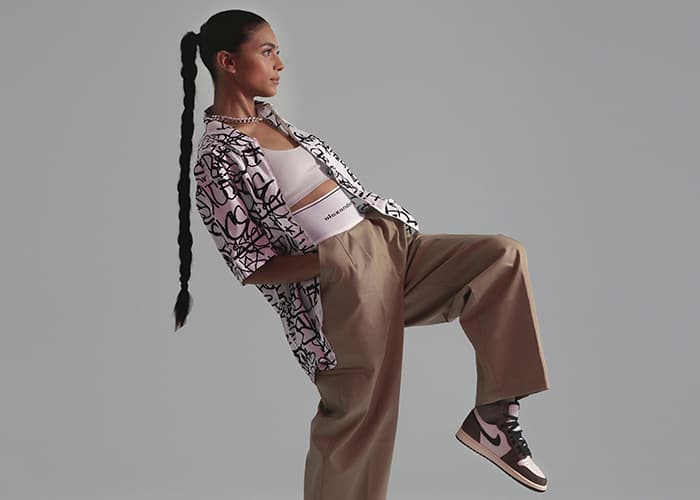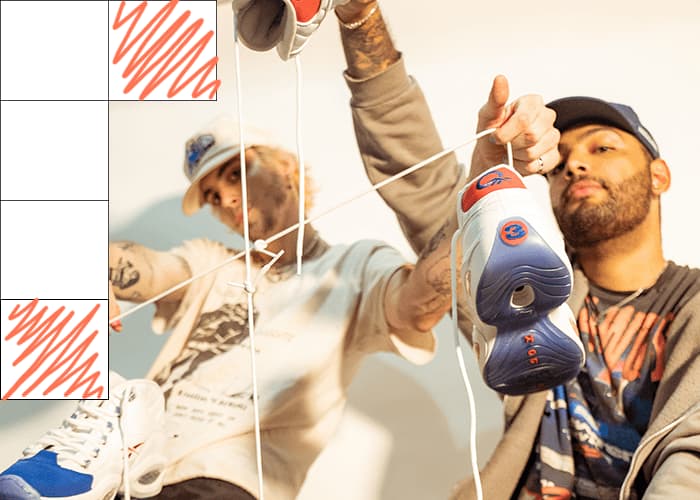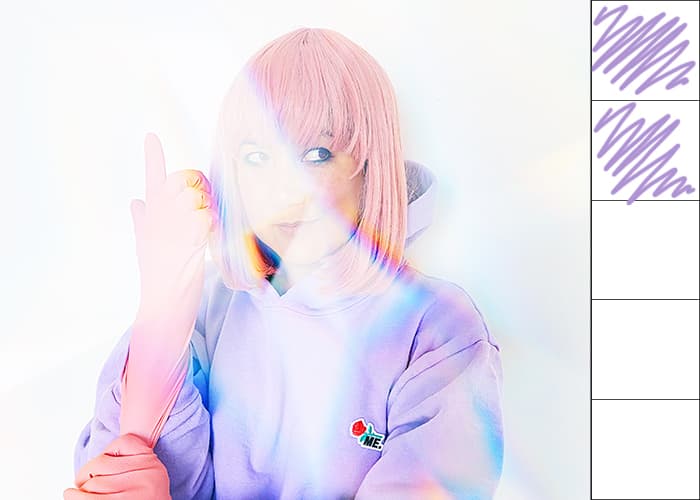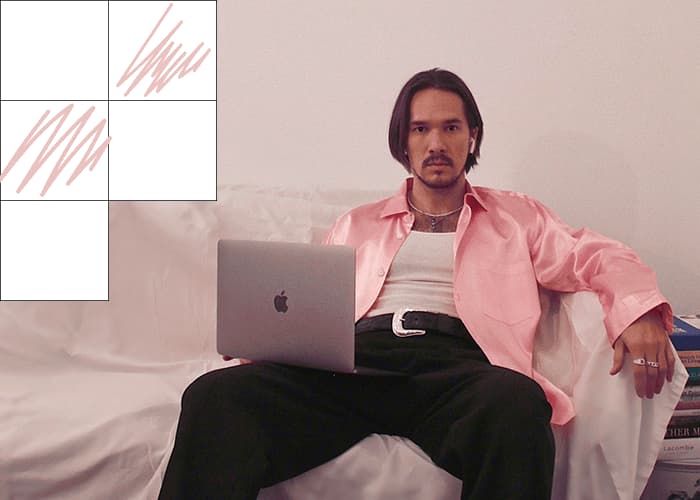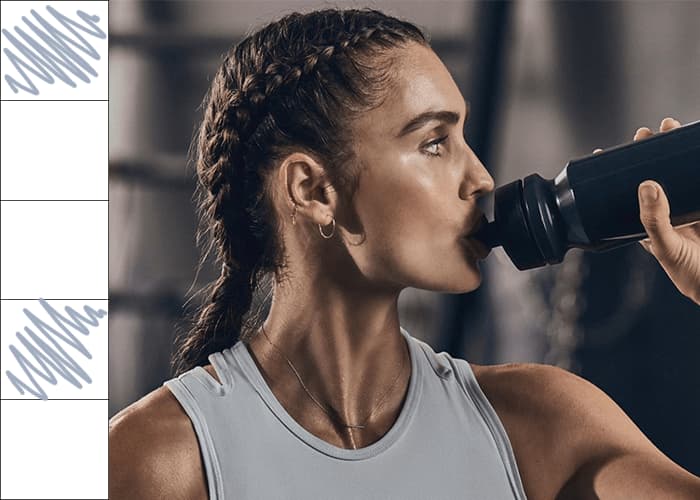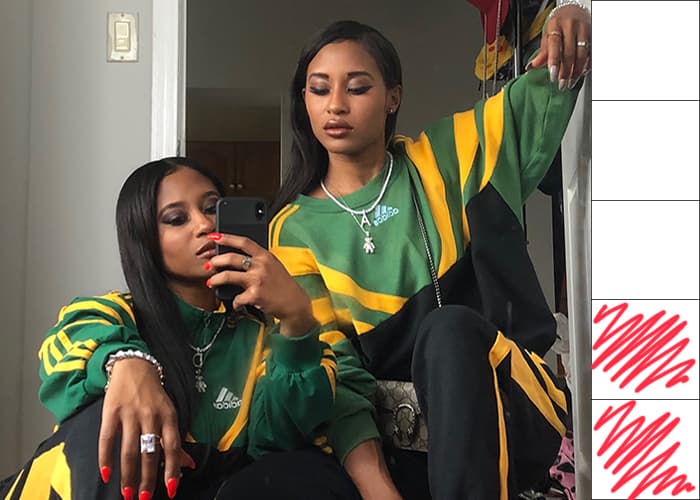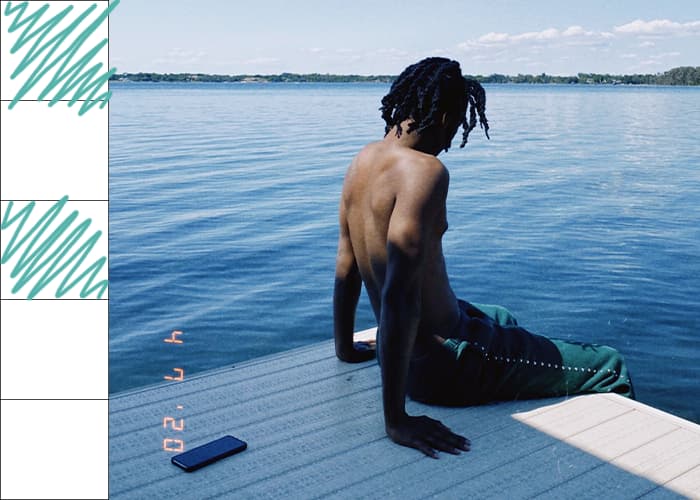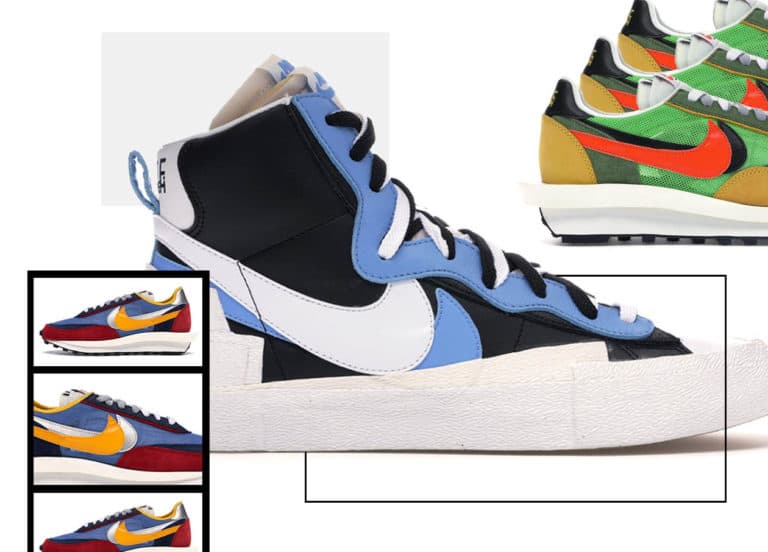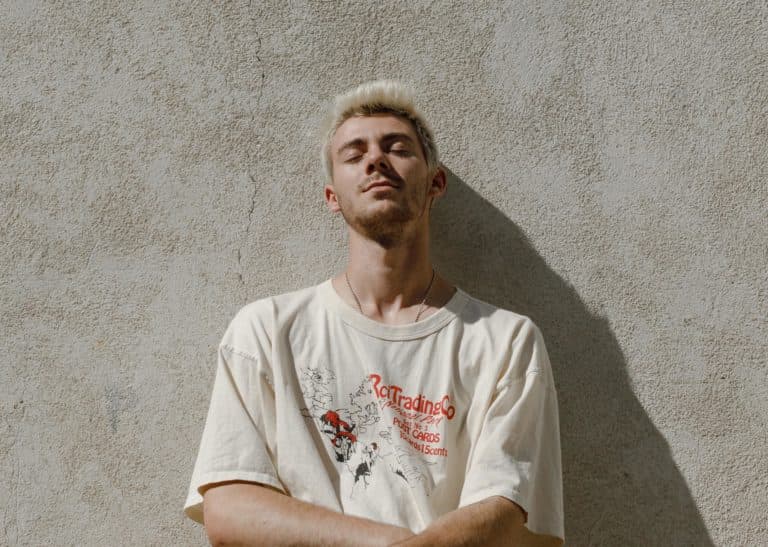 Editor’s Note: Hailing from a small town in New Jersey, Danielle Guizio is the definition of a modern day fashion hustler. With the support of those closest to her, she started her business with only the tax return money from her streetwear job, designing a run of t-shirts that sold out immediately. Since then, Danielle has expanded her retail sales internationally, launched footwear, landed on the Forbes 30 under 30, and has numerous future collaborations in the works. Not only are her designs seen on the likes of Kylie Jenner, Bella Hadid and Hailey Baldwin, but they shine on stage with artists such as Halsey, Madison Beer, and Lady Gaga. We met up with Danielle in New York City to talk about her journey to success, what inspires her, and what’s to come. Read Up. (This interview has been edited for brevity and clarity.)
Editor’s Note: Hailing from a small town in New Jersey, Danielle Guizio is the definition of a modern day fashion hustler. With the support of those closest to her, she started her business with only the tax return money from her streetwear job, designing a run of t-shirts that sold out immediately. Since then, Danielle has expanded her retail sales internationally, launched footwear, landed on the Forbes 30 under 30, and has numerous future collaborations in the works. Not only are her designs seen on the likes of Kylie Jenner, Bella Hadid and Hailey Baldwin, but they shine on stage with artists such as Halsey, Madison Beer, and Lady Gaga. We met up with Danielle in New York City to talk about her journey to success, what inspires her, and what’s to come. Read Up. (This interview has been edited for brevity and clarity.)
Ari Nonahal, StockX: Can you introduce yourself?
Danielle Guizio: My name is Danielle Guizio and I’m a designer.
A: Can you give us a rundown of this space right now?
D: Right now we are at my office in New York City, in the heart of the garment district.
A: You’ve experienced an amazing amount of success in the last couple years, most recently made Forbes 30 under 30 with every it-girl wearing your designs. Your collection is now sold internationally in stores and you’re designing for notable music artists on tour. Let’s go back to your first Personal Space, did you always want to be a designer?
D: Growing up I always wanted to be a designer. At the time, it wasn’t something you necessarily think you’ll be successful at. It’s a situation where you tell your parents, “Oh I want to be a designer,” and they’re just like, “That’s…nice, sweetie.” This wasn’t something that I thought I could do. It was just like I want to be a designer and I love fashion, but I originally had the mindset I could probably make a better living in the business of fashion rather than being a designer.

A: What were you inspired by growing up?
D: When I was young I would have these catalogs that I would scrapbook all together. I would take whatever magazine it was, cut the entire thing apart and start gluing the outfits together how I thought they should visually be. I was like 10 years old. It’s kind of like I’ve had this vision since I was younger.
A: When you and your assistant designer sit down, what is the first thing you do?
D: It starts off as an idea. Sketching is not my forte, so I’ll have to visually explain it in some way and sketch to my best ability. I try to show references and piece it together. A lot of what I do is digital, so if I sketch the idea out and explain it to my assistant designer, she’ll understand it right off the bat. I’ll tell her exactly what I like about it, what I don’t like about it, and then we just go directly into sketching. From there we tweak it a little bit, and then we go into digital mock-ups.
A: You posted a screenshot on your Instagram story of an email about a dream you had for a sunglass design. Does most of your creative process happen at night?
D: I’m kind of an insomniac. I work better at night and it seems like I thrive 5pm to 2am then stop working at 3am. I’m in the office at 11am, but my creative juices don’t start flowing until it’s night time. I always tell my employees that I will not have a good idea before 11am, so there’s no use of me being there before then. I’m just not a morning person. A lot of my ideas either happen past like 5pm, or I’m thinking them in my sleep subconsciously. I’m sleeping very light because I’m thinking so much about work and it’s hard for me to have a really good night sleep. I’m thinking about designs and a lot of things. Before I go to bed I go to the notes section on my phone and make a to-do list of everything I have to do the next day. That way I can wake up and know what I have to work on. Anything on your subconscious you should write it down.

A: How do you know when something is good to go?
D: Personally, I’m a perfectionist. So for me, nothing is ever done. Nothing is ever perfect, and that’s definitely one of my biggest struggles that I deal with it. It’s definitely something that I lose sleep over, but my employees remind me that at a certain point I just have to give it up. I’m like, okay fine! It goes from tweaking, tweaking, and then I have to just give it up and send it to have samples made.
A: When you curated this space, is it a retreat for you? Or is it a creative space for you?
D: When you’re living in New York City, you’re sacrificing a lot to be here. Your office rent, warehouse rent, those are all things that come into play. In Los Angeles, it’s a little bit different. You can get your money’s worth for the square footage there. In New York, you’re taking what you can get as a sacrifice to work and design here. This is my dream office, something that I would never have imagined. I started out working out my parents basement and after that, I was working out of a tiny doctor’s office. My inventory started growing and I knew I couldn’t work out of my parents basement forever, so I found a doctor’s office that was only $400 a month. I was storing all my inventory there and literally, there were vacant doctors rooms in the office.
For me the most important aspect of starting a business is keeping your overhead as low as possible regardless if you want to flex. Regardless of what you want to show on instagram. Regardless of what your friends think. Of what anyone thinks in the industry. You have to do what’s best for you.
At that moment, I was so embarrassed to work out of tiny offices. You can’t invite clients over. Bella Hadid and Hailey Baldwin were wearing our stuff and it was funny because we were operating out of this doctors office. To me, I don’t care and what’s important is your end all vision for your company. You kind of know eventually you’re going to get there, so these are the sacrifices that you have to take. I didn’t care what anyone else thought.
After gaining a lot of momentum, I was able to graduate from the doctor’s office (God bless!) and grow into a bigger warehouse. Being in a bigger space meant I could hire employees and interns. Then after we grew out of that space, we were able to hire customer service and logistics team. Things have just continued to move pretty fast. I love this space we’re in now.

A: Does your growing success feel surreal sometimes?
D: Things start moving so fast and they become bigger than you. Eventually you look back and you think, Okay, this is actually crazy! We had a smaller office downstairs only 6 months ago. I thought to myself, I can’t bring anyone else into this office because there’s no more room, so we moved up here. The thing about fast growth is you have to do it strategically and you don’t want to grow too fast. Now you’re dealing with all these lives and salaries of your employees you manage. It’s the last thing you think of when you’re trying to start a brand. You’re learning as you go. There are a lot of aspects to it that you don’t see on Instagram. Coming from a small suburban town in Jersey and working in NYC all my life, it’s still so surreal for me to actually think I have my own space and office here.
A: Do you feel like you design for your personal style? Or do you design to fill a void in the fashion industry?
D: Essentially both. Before I was a designer, I would go shopping with this vision in mind of what I wanted to wear. When I realized that I could design exactly what I wanted to wear myself, I wanted to pursue that. I wanted to bring those ideas into fruition for not just me to wear, but for everyone else to wear along with me.

A: Did you know from day one that you wanted your clothes to be branded in your name?
D: When I started my brand it was a conversation. It felt the most organic titling it under my name because it embodied all of what I am. Right now we are debating dropping the “Danielle” and calling it “Guizio” so it’s more universal.
A: How has the rise of streetwear and sneaker culture influenced you?
D: One of my first jobs was working retail for a streetwear company, so it absolutely has an impact on who I am. The culture overall, living in New York City, you adapt to that way of life. It’s a relatively large circle of many backgrounds & generations yet everyone comes together as one creating this close community built on street culture; art, skate, design, music and so on. There’s so much history within streetwear and I wouldn’t limit it to just sneakers. All of which that embodies streetwear has influenced me along the way.
A: You worked at The Hundreds store, right?
D: Yeah, it was crazy. *laughs* On Grand Street. People gravitate to streetwear because everyone is being their authentic self. The kids ringing you up at the store are fully invested in those brands. They’re there for the music, fashion and the community. A lot of these stores hire people that they want to represent their brand. When retail stores just hire whoever, you can tell it’s just a job for them and they aren’t truly connected. It makes the experience much more authentic.

A: Is there anyone specific in the industry or in your life who has been a mentor to you and helped get you to where you are today?
D: There were a lot of people who were and are a part of my journey that I fully appreciate and will never forget in which ways they’ve helped me, I’m forever grateful for them. Initially when I started my brand, I was coming out of community college with a crazy health scare and was in and out of the hospital for months. After I got back from that I realized how short life is and that you have to do exactly what you want to do. You have to set your fears aside, you have to set what other people think of you aside, break limitations that others have installed into your mind, put all of that behind you and take a risk. Life is so short. We have to take advantage of our daily life.
A: So not so much a specific person but more of this experience?
D: It was definitely an experience that put things in perspective for me to really do what I wanted to do. Society often times tries to tell you that what you want to do won’t lead to success and people try to cloud your mind with paths. You soon realize that none of that matters, and that is when I started my brand. My boyfriend and his sister, who I’m best friends with, were supportive and helped push me to just do it. We were at her apartment one day and she was like, “let’s just do it! Let’s just make three graphic tees right now.” I told her exactly how I envisioned the shirts and she mocked it up. We started with three graphics tees that I produced with the tax return money I got from my streetwear job. As soon as they went live they were selling out. I had a little following on social media so that helped. During that time I was in class working on my brand and it started taking a lot of my focus. Sales were happening and the business was growing. I did not want to be in community college anymore. So, I made the decision to pursue it fully. I told my dad I wanted to leave school, showed him my sales, and he knew it wasn’t a joke. My dad owns his own business, so he is a mentor to me. He knew I was serious about this. After that, I focused entirely on my brand. When you focus on one thing, it’s crazy what you can make of it.
A: It sounds like you have a great support system.
D: Yeah, 1000%. When I see friends starting businesses, I try to help to the best of my ability. I do have a great support system. I’m realizing that other people don’t necessarily have that strong foundation of support, so I’m extremely appreciative.
A: As a company that is so intertwined in social media today, what influences you?
D: Traveling has a huge influence on me. It’s where I can kind of just not be behind my desk. I can get the creativity flowing, I can get inspired. I’m inspired by anything in daily life. I definitely spend a lot of my time in the library going through archives and things like that to get inspired. A lot of my inspiration comes from everything, from music to film to traveling to spending hours in the library alone by myself.

A: When is your next line coming out?
D: Right now, we’re working Spring 2020. You’re always living in the future, it’s hard to be in the moment. I’m always working in the future. I just got back from Paris, that was Fall/Winter 2019. I have to think about what I want to see everyone wearing at the time.
A: What’s next for you?
D: I’m super excited. We have some new collaborations coming out, new collections, and constantly working in the future!



